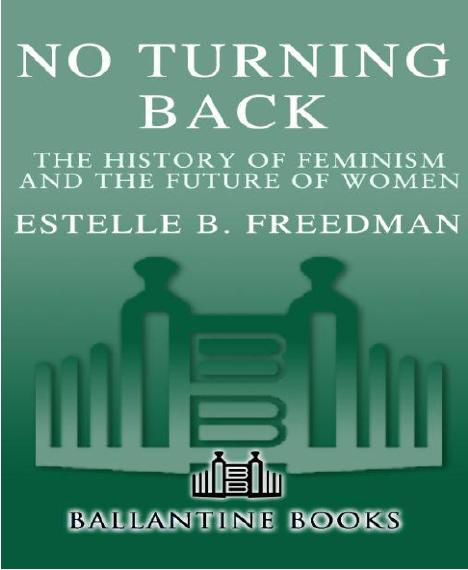No Turning Back: The History of Feminism and the Future of Women by Freedman Estelle

Author:Freedman, Estelle [Freedman, Estelle]
Language: eng
Format: mobi, epub, pdf
Publisher: Ballantine Books
Published: 2007-12-17T16:00:00+00:00
FEMINISM AND BODY POLITICS
Western feminists initially responded to medicalization and commercialization by demanding women’s control over their own bodies, a principle grounded in the political theory of individual rights. In democratic nations those admitted to the “body politic” of representative government—initially free white adult European males—enjoyed the right to physical liberty. Instead of the authoritarian control of bodies, democratic societies celebrated the virtues of personal self-discipline. Feminist politics have incorporated ideals of both individual physical freedom and internalized control of the body, but they have also changed over time to rethink the meaning of control.
Since its inception, feminism has tried to extend to women the physical rights enjoyed by men. Rather than being considered mere reproductive or sexual bodies, writers such as Mary Wollstonecraft insisted that women should be allowed a life of the mind. In the 1870s Elizabeth Cady Stanton reminded young women that “God has given you minds, dear girls, as well as bodies.”12 Conservatives of her era disagreed, fearing that higher education drained women’s reproductive energies and reduced their fertility. (Smart female college graduates disproved this theory by showing statistically that education did not depress reproductive capacity.) Early feminists also sought freedom from bodily constraint. Dress reformers in England and the United States decried the tight-laced corset in vogue during the 1800s. Amelia Bloomer recommended the more comfortable pantaloons that later bore her name, although the fashion did not survive early ridicule. By the early 1900s both male and female reformers campaigned against female foot binding in China. “Deforming a natural foot . . . is just as abusive as that of binding the waist,” wrote a Chinese American physician in 1909.13
When Western feminism revived in the 1960s, activists realized that they attracted their greatest media attention by publicizing women’s bodily confinement. In 1968 U.S. radical feminists scored their first publicity coup by protesting the Miss America pageant to call attention to the sexual objectification of women. Outside the pageant young women created a symbolic funeral pyre in which they burned “instruments of female torture” such as “high heels, nylons, garter belts, girdles, hair curlers, false eyelashes, makeup, and Playboy and Good Housekeeping magazines.”14 Women around the world demonstrated against beauty contests, picketing the Miss World pageant in London. They also protested the medicalization of the female body. In the Netherlands a group of Dutch feminists bared their stomachs at a convention of gynecologists to reveal the slogan “Boss of Our Own Belly” written there.15
Download
No Turning Back: The History of Feminism and the Future of Women by Freedman Estelle.epub
No Turning Back: The History of Feminism and the Future of Women by Freedman Estelle.pdf
This site does not store any files on its server. We only index and link to content provided by other sites. Please contact the content providers to delete copyright contents if any and email us, we'll remove relevant links or contents immediately.
Cecilia; Or, Memoirs of an Heiress — Volume 1 by Fanny Burney(32075)
Cecilia; Or, Memoirs of an Heiress — Volume 3 by Fanny Burney(31469)
Cecilia; Or, Memoirs of an Heiress — Volume 2 by Fanny Burney(31419)
The Great Music City by Andrea Baker(30797)
We're Going to Need More Wine by Gabrielle Union(18641)
All the Missing Girls by Megan Miranda(14788)
Pimp by Iceberg Slim(13798)
Bombshells: Glamour Girls of a Lifetime by Sullivan Steve(13698)
Fifty Shades Freed by E L James(12925)
Talking to Strangers by Malcolm Gladwell(12888)
Norse Mythology by Gaiman Neil(12861)
For the Love of Europe by Rick Steves(11558)
Crazy Rich Asians by Kevin Kwan(8898)
Mindhunter: Inside the FBI's Elite Serial Crime Unit by John E. Douglas & Mark Olshaker(8721)
The Lost Art of Listening by Michael P. Nichols(7170)
Enlightenment Now: The Case for Reason, Science, Humanism, and Progress by Steven Pinker(6879)
The Four Agreements by Don Miguel Ruiz(6326)
Bad Blood by John Carreyrou(6284)
Weapons of Math Destruction by Cathy O'Neil(5846)
